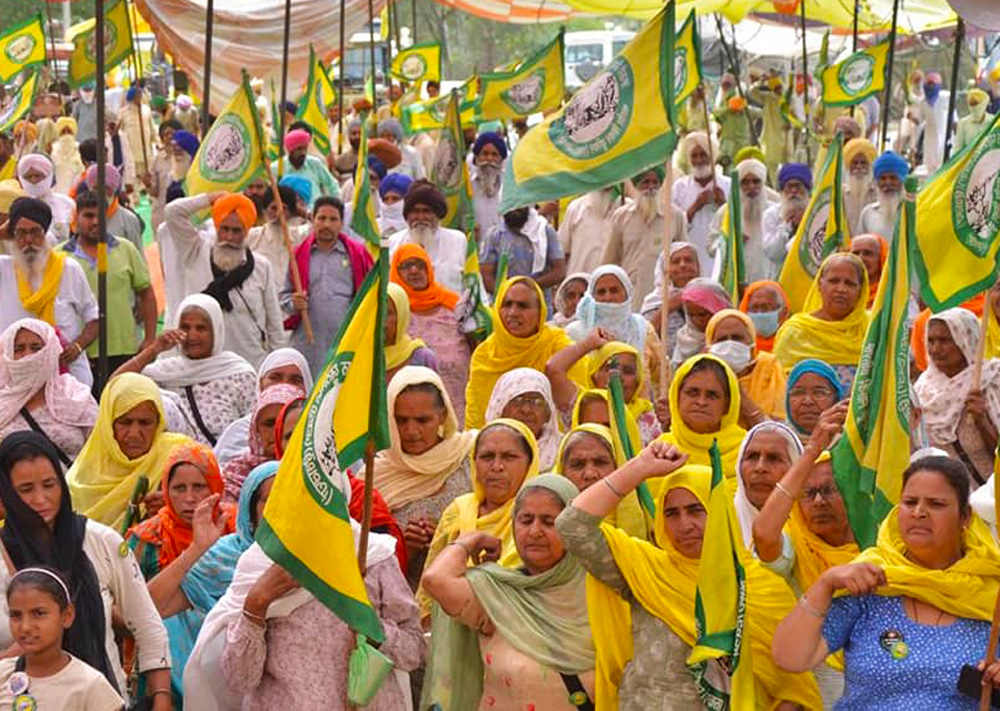For over five months about 200,000 farmers at a time have lived in three main protest encampments on roads into New Delhi, India’s capital, despite government efforts to use the rise in deaths from coronavirus to get them to leave.
Farmers are demanding the elimination of laws that would end government price supports and undercut state-organized wholesale markets that help ensure they receive a sufficient income to keep their livelihoods.
“The government is using COVID” to try to weaken the protests, Gursimran Singh, a student in Canada, told the Militant by phone April 29. His parents are farmers in Punjab who have joined the camps. “If the government really fears COVID deaths,” they say, “scrap the law and we will go home.”
Some 4,000 people died from the virus in India for the third straight day May 14 and infections are multiplying. Farmers’ leaders say they won’t be holding big rallies until the current health crisis subsides, Singh said.
“We have followed coronavirus guidelines,” Rakesh Tikait, a leader of Bharatiya Kisan Union, one of the main farmers’ organizations, told the press in mid-April. He said the protesters “plan to stay put” through the end of the year “if the government doesn’t listen to us.”
Family farmers’ livelihoods at stake
The new laws rammed through parliament by Prime Minister Narendra Modi last September make farmers more vulnerable to exploitation by big capitalist traders, who are determined to drive down prices. More small farmers will face ruin as the government pushes to open up the country’s vast agriculture to greater domination by some of India’s wealthiest capitalists.
Farmers are demanding the national extension of the state-backed price support system to encompass 23 basic crops. This would cover all their costs of production, including upkeep for family labor.
Contrary to Modi’s hopes, the numbers joining protest camps have not been affected by farmers’ need to return to the fields for harvest season. In the northern bread basket region, this is mid-April to mid-May.
“Because we live in extended families, two people can stay in the camp and the rest are home in the fields,” Brinder Bajwa told the Militant May 9. He is a student in Canada whose family is from Punjab, India. Following rosters drawn up for every village, “they rotate who joins the protest.”
Sikhs, Hindus and Muslims have participated in the camps, including increasing numbers of women. Protests have spread to 20 states, including Bengal, Odisha, Bihar, Karnataka, Maharashtra and Gujarat, despite vicious cop assaults on farmers’ demonstrations in New Delhi and elsewhere.
Government ministers have tried to undermine support for farmers by claiming the protests are orchestrated by rich farmers, Sikh separatists or foreigners. Talks between government and farm representatives haven’t resumed since February.
Over half of India’s 1.3 billion people live in the countryside and are reliant on agriculture. But the vast majority of farmers work small plots of a few acres, which are often subdivided as they are passed on to new generations.
Farmers in Punjab and Haryana, where protests began, grow more than half of India’s wheat and rice. Many are forced into greater debt to buy machinery and chemicals. In these parts of the country land is relatively dry and farmers have to pay for deeper irrigation wells and stronger pumps to access water. The growing depletion of groundwater adds to the crisis.
An estimated 300,000 Indian farmers, crushed by debt, have committed suicide in the last two decades. “Farm laws are more dangerous than the COVID,” Singh said.
In early March India’s health minister, Harsh Vardhan, declared the end of the pandemic. The Modi government abandoned health precautions at mass rallies during five state election campaigns. And it didn’t place new orders for vaccines or hospital equipment.
The subsequent rapid surge of COVID infections overwhelmed hospitals. Just 2.9% of the population has been vaccinated as of May 14.
Katy LeRougetel in Montreal contributed to this article.


